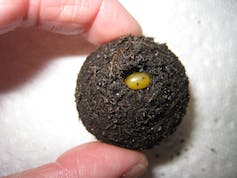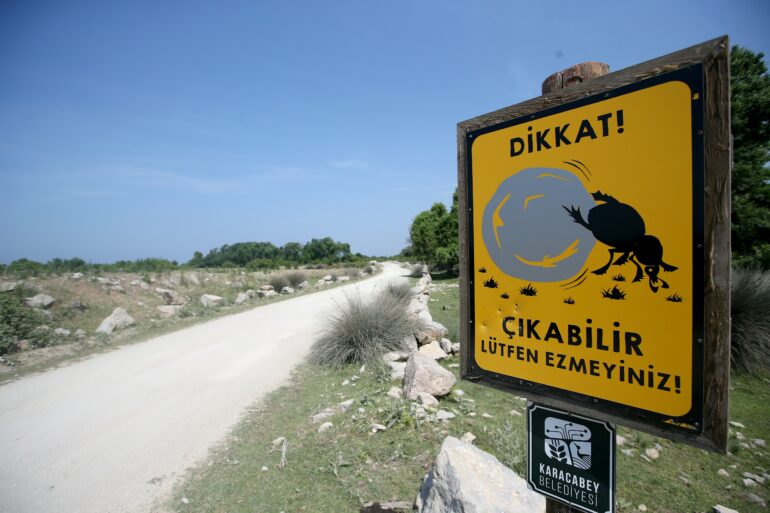If the TV series “Dirty Jobs” covered animals as well as humans, it would probably start with dung beetles. These hardworking critters are among the insect world’s most important recyclers. They eat and bury manure from many other species, recycling nutrients and improving soil as they go.
Dung beetles are found on every continent except Antarctica, in forests, grasslands, prairies and deserts. And now, like many other species, they are coping with the effects of climate change.
I am an ecologist who has spent nearly 20 years studying dung beetles. My research spans tropical and temperate ecosystems, and focuses on how these beneficial animals respond to temperature changes.
Insects don’t use internally generated heat to maintain their body temperature. Adults can take actions such as moving to warmer or colder areas. However, earlier life stages such as larvae are often less mobile, so they can be strongly affected by changing temperatures.
But dung beetles appear to have a defense: I have found that adult dung beetles modify their nesting behaviors in response to temperature changes by burying their brood balls deeper in the soil, which protects their developing offspring.
Without dung beetles, the world would be messier and smellier.
Champion recyclers
It’s easy to joke about these busy insects, but by collecting and burying manure, dung beetles provide many ecological benefits. They recycle nutrients, aerate soil, lessen greenhouse gas emissions from cattle farming and reduce pest and parasite populations that harm livestock.
Dung beetles are also important secondary seed dispersers. Dung from other animals, such as bears and monkeys, contains seeds that the beetles bury underground. This protects the seeds from being eaten, makes them more likely to germinate and improves plant growth.
There are roughly 6,000 species of dung beetles around the world. Most feed exclusively on dung, though some will feed on dead animals, decaying fruit and fungi.
Some species use stars and even the Milky Way to navigate along straight paths. One species, the bull-headed dung beetle (Onthophagus taurus), is the world’s strongest insect, able to pull over 1,000 times its own body weight.
That strength comes in handy for dung beetles’ best-known behavior: gathering manure.
Rolling and tunneling
Most popular images of dung beetles show them collecting manure and rolling it into balls to spirit away. In fact, some species are rollers and others are tunnelers that dig into the ground under a dung pat, bring dung down into the tunnel and pack it into a clump or sphere, called a brood ball. The female then lays an egg in each brood ball and backfills the tunnel with soil. Rollers do the same once they get their dung ball safely away from the competition.

